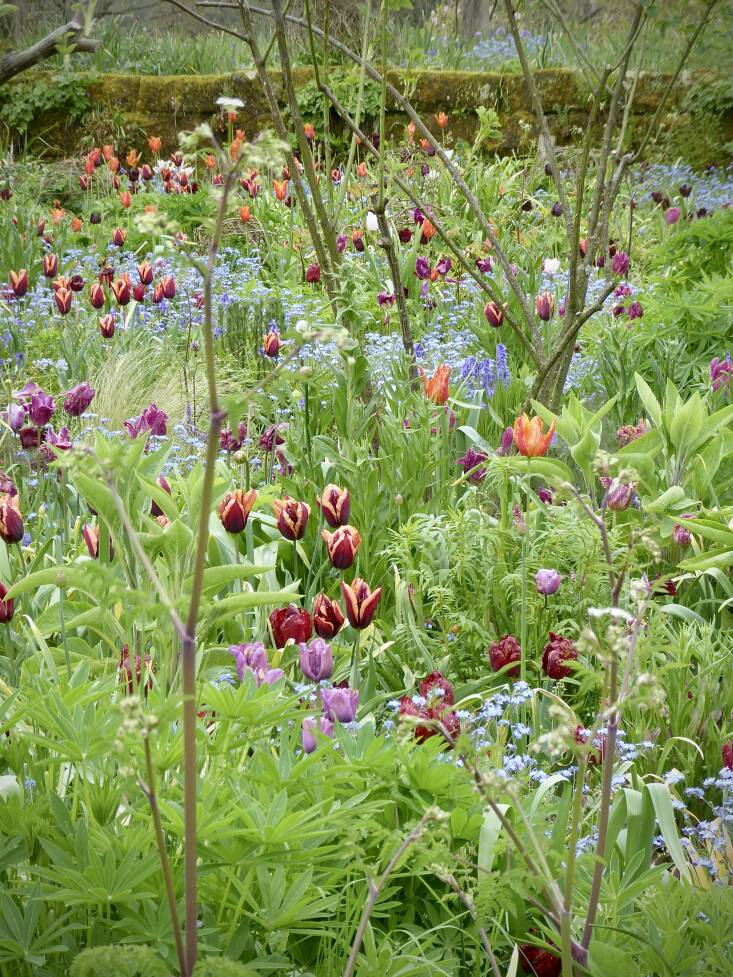During a cold and extremely wet English spring, we revisited Gravetye Manor. The bucolic Sussex estate—with 36 acres of flower gardens, meadows, mixed borders, lawns, and a vast one and a half acre elliptical walled kitchen garden—surrounds a country house hotel that is set in a wider 1,000-acre estate. All of it was once owned and nurtured by the prolific Victorian writer and garden maker William Robinson, whose books espoused naturalistic planting and gardening in tune with nature.
For the past 13 years, the prodigiously talented Tom Coward has overseen a team of six other gardeners to restore and reimagine this heritage garden. The Great Dixter alumnus has reinvigorated the kitchen garden, which was covered in brambles and weeds by the time he arrived here in 2010, and injected vigor and bravura planting into vibrant borders and electrifying meadows. Even on a damp, cool spring day there were fresh ideas in all directions.
Photography by Clare Coulson.
1. Use bulbs as your paintbox.

2. Create structures with waste materials.

3. Place an eye-catcher to create a vista.

4. Plan for statement-making plantings.

5. Marry plants with objects.


6. Weave in flowers.

7. Go for height.

8. Know your plants—like, really know them.

9. Don’t forget about the crevices.

See also:
- Jungleland: The Exotic Garden at Great Dixter
- Bohemian Bolthole: Kelmscott Manor, Former Home of William Morris
- Stone and Roses: Asthall Manor in the Cotswolds









Have a Question or Comment About This Post?
Join the conversation